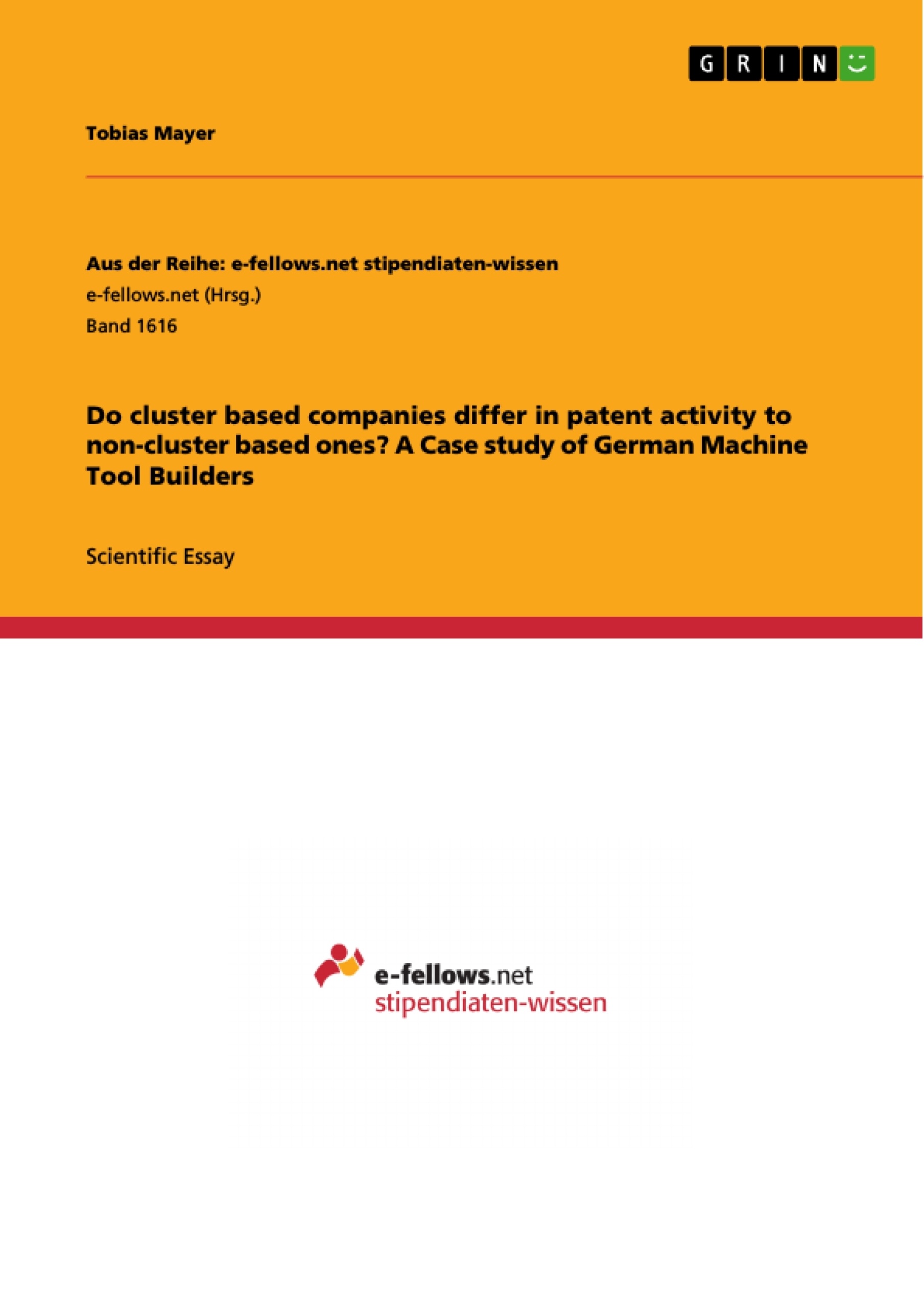This research analyses whether German Machine Tool Builders headquartered in industrial clusters differ in patent activities from companies outside these regions.
Therefore this paper provides standard references as well as current research activities in the field of cluster processes and examines if the theoretical approaches and characteristics also apply on a sample of 112 German Machine Tool Builders.
Based on the German Patent and Trademark Office database the results show that cluster based and non-cluster based firms´ patent activities differ just insignificantly regarding the patent and utility model applications per year and per 1 Mio. € revenue.
This may come from the decreasing importance of spatial proximity as knowledge seems to be well codified and therefore easily transferable in a mature stage of the industry lifecycle.
Inhaltsverzeichnis (Table of Contents)
- Introduction
- Literature Review
- Innovation and Tacit Knowledge
- Clusters and Geographic Proximity
- Industry Maturity and Knowledge Transfer
- Research Design and Method
- Case Study and Sample Selection
- Data Collection and Filtering
- Discussion
Zielsetzung und Themenschwerpunkte (Objectives and Key Themes)
This research aims to determine whether German Machine Tool Builders located in industrial clusters exhibit different patent activity compared to those outside these regions. The study examines the relationship between geographical proximity and patent activity, specifically within the German Machine Tool Builders industry.
- The influence of industrial clusters on innovation and patent activity
- The role of tacit knowledge and its geographic concentration
- The impact of industry maturity on knowledge transfer and spatial proximity
- The use of patents as a measure of innovation in the machine tool industry
- The comparison of patent activity between cluster-based and non-cluster based firms
Zusammenfassung der Kapitel (Chapter Summaries)
The Introduction outlines the research question and its significance in the context of globalization and cluster dynamics. The Literature Review examines existing research on innovation in clusters, knowledge transfer, and patent activity. It explores the role of tacit knowledge, geographic proximity, and industry maturity in driving innovation. The Research Design and Method section details the case study approach, sample selection, and data collection process. It describes the use of the German Patent and Trademark Office database, the filtering criteria applied to the data, and the key performance indicator used to measure patent activity. The Discussion chapter analyzes the results of the data analysis and compares the patent activity of cluster-based and non-cluster-based firms.
Schlüsselwörter (Keywords)
The study focuses on the relationship between industrial clusters, innovation, knowledge transfer, and patent activity within the context of German Machine Tool Builders. Key themes include the role of tacit knowledge, geographic proximity, industry maturity, and the use of patents as a measure of innovative activity.
- Quote paper
- Tobias Mayer (Author), 2015, Do cluster based companies differ in patent activity to non-cluster based ones? A Case study of German Machine Tool Builders, Munich, GRIN Verlag, https://www.grin.com/document/307440
-

-

-

-
Upload your own papers! Earn money and win an iPhone X. -

-
Upload your own papers! Earn money and win an iPhone X. -

-
Upload your own papers! Earn money and win an iPhone X. -

-
Upload your own papers! Earn money and win an iPhone X. -

-
Upload your own papers! Earn money and win an iPhone X.

